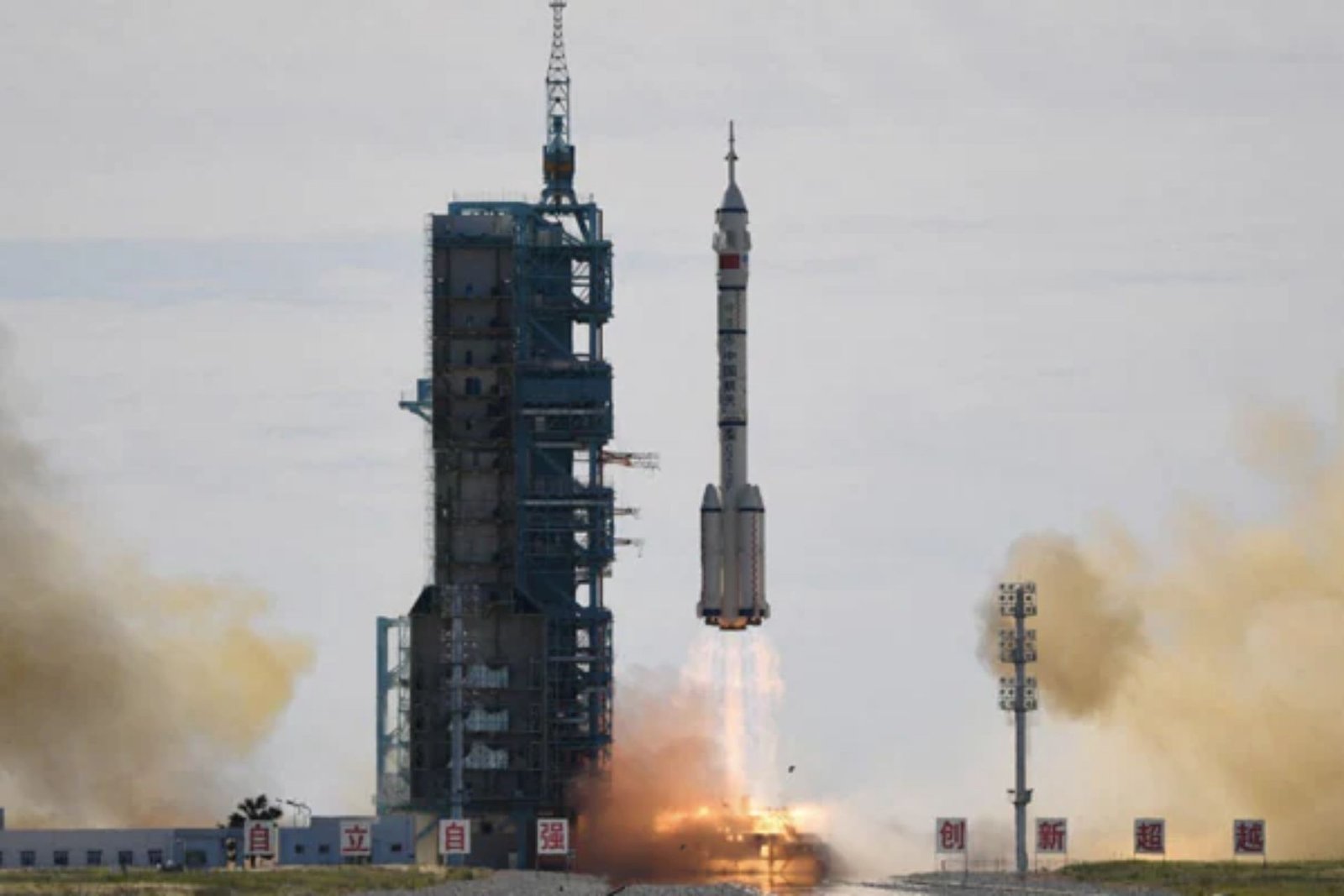The first astronauts of China’s new space station saw the longest crew mission to date in China, a milestone in making Beijing a major space power. The trio started with the Tiangong station’s Long March-2F rocket and will spend three months in a much anticipated live burn-off on State TV.

The raising of the rocket occurred in the clouds of smoke against the blue sky at 9:22 am (0122 GMT) from the Jiuquan launch centre in Northwest China’s Gobi desert. After approximately 10 minutes, the orbit reached and the space ship was separated from the rake to make loud applause between rows of blue engineers in the control room.
CCTV showed a live feed from the interior of the spacecraft and the three astronauts lifted their helmet visors and a smiling and waving camera. Another person floated a pen in zero gravity just off his lap as he surfed the flight manual. Foreign cameras broadcast live Earth images from the craft.
“The Long March-2F Rocket sent the manned Shenzhou-12 spacecraft into the preset orbit,” said Zhang Zhifene, the Jiuscan satellite launch Center’s Director, according to reports from the Beijing Aerospace Control Center.
“The solar panels are well developed and now we are declared a complete success for the Shenzhou-12 launch.” At a pre-blastoff ceremony the three astronauts, who wear their robe already, greeted the crowd of fans and space workers, who sang a patriotic song called “There’ll be no new China without the Chinese Communist Party.”
Nie Haisheng is the Mission Commander; he has already taken part in two space missions and is a decorated pilot of the People’s Liberation Army air force. The other two are also military members.
Life in Space Their spacecraft Shenzhou-12 will be docked with the space station’s main Tianhe section, which was orbited on April 29, possibly within 6 hours of lift. For each module, there are separate living areas, a “space walkway” and a bike for workouts and an email and video call communication centre with ground control.
In nearly five years, it was China’s first crew mission. Chinese Manned Space Program Huang Weifen told the astronauts that two spaces, lasting around six or seven hours, are going to take place during the mission.
The trio would also wear spacewalking spacesuit newly developed. The launch represents a matter of enormous reputation in China, as Beijing will be celebrating on 1 July a massive propaganda campaign for the centenary of the ruling Communist Party.
To prepare for the mission, the crew has been trained for over 6,000 hours, hundreds of underwater jets in complete space.
The Chinese space authority plans to launch the 70 tonne station and supplies and crew members a total of 11 launches through the end of next year, including three additional staff missions that will deliver two laboratory modules. The durability of Tiangong is expected to be much lower than the ISS and will be at least 10 years.
China has stated that its space station is open for international cooperation, even if it still has details to give “Foreign astronauts will certainly enter the church one day,” said Zhou Jianping, head of space programme design.
“A number of countries have expressed their willingness to do this, and we will be open to it in the future,” he said.
Beijing also plans to build a separate lunar space station in March with Russia, and the two countries issued a ‘roadmap’ for potential opportunities for collaboration this week.








































